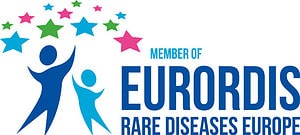Exercise can be helpful for those with mitochondrialRelated to the mitochondria. disease, yet exercise can also be both painful and/or nearly impossible due to fatigueThe overall feeling of tiredness or lack of energy. It is not the same as simply feeling drowsy or sleepy. Being fatigued means having no motivation or energy. and muscle weakness. Kimberly Serra, PT,DPT, MTC, CSCS answers some of the most frequently asked questions about exercising with mito.
What is physical therapyTreatments aimed at helping someone improve the ability to move parts of their body. and how can it help?
Physical Therapy can help those in pain or experiencing loss of function due to illness or disease to restore functional motion needed to achieve ADLs (Activities of Daily Living). Specifically, Mito patients (children and adults) can have impaired function and strength as well as stamina and endurance issues. A physical therapist will first perform an evaluation in order to develop a specialized treatment plan which could include strategies, for example, to help improve gait, balance or endurance. The initial PT visit may last about an hour is likely to include a complete history (signs and symptoms of disease as well as other accompanying ailments unique to the patient). This will give the PT a full picture of the patient. The patient's energy level may determine the extent of the evaluation - and if the patient cannot endure a full hour, then several visits might be necessary. Other things to look evaluate in the initial visits are muscle tone and gait (how a person walks).
What qualifications should a Mito patient look for in a Physical Therapist?
Look for a therapist who has several years of experience and who, ideally, has some experience with mitochondrial disease as treatment for a Mito patient will be quite different than that for a post-surgical patient. The PT should be willing to work with you on an individual basis, one to one, so that you see the same therapist each time. A certified manual therapist is also an option. The PT should be willing and able to work with you individually and understand the slow progress that is typical for children and adults with Mito, and consequently set very gradual goals. Ideally, the office staff should also be flexible and understanding; Mito patients often have to cancel appointments at the very last minute because of symptoms which are quite unpredictable. Begin by researching the physical therapists in your area, and have your PCP talk with the therapist. Your PCP (and your specialists) can help focus on the special medical needs and goals. A team approach is important here, so if the patient is not responding or progressing in PT, others may have input into what to do next.
What is the difference between conditioning and strength training?
Conditioning helps a person's endurance or stamina so they can withstand activity, whereas strength training provides general toning of muscle groups.
How can you plan exercise when Mito symptoms are so unpredictable?
PT's can adjust the program so that one day when the patient feels well, the program can go forward, but on a "bad day" exercise can be limited to postural exercises or very gentle movements. The key is to plan on very gradual goals, knowing that there may be setbacks. In the past 3-5 years there has been a shift towards the idea that exercise is both safe and good for Mito patients. This is true - but exercise must be managed correctly. Begin with very low level exercises, such as taking 5 deep breaths or holding a stretch for 5 seconds. Pool therapy can also be helpful because it puts less stress on joints because of the buoyancy of water, but again, one cannot stay in the pool for too long (5-10 minutes to start) because of the expenditure of energy. A recumbent bike (non-weight bearing) for 1-2 minutes is also useful. Use of weights should be done very gradually; for example, complete a range of motion (ROM) for just 5 repetitions to start and build on that. As more repetitions are possible, adding some resistance and additional weight can be attempted - but again - very gradually.
Due to the variability of Mito symptoms, exercise tolerance can also be quite variable. One those days when a person feels good, he/she might do too much, exceeding their normal amount of exercise, and “pay for it” the next day. Therefore it is essential to balance and manage necessary versus unnecessary energy expenditures.
It is also helpful to keep a chart or diary for a week of all of your activities in order to review total energy expenditures and also note when your body seems to be at its lowest energy level. This can help you plan activities for the future.
What about pain?
Patients should never exercise through pain. If you have pain, stop! Sometimes a short rest is necessary, and yet other times you may need to wait and try again at the next session. The exercise plan can be modified. Often there is variability in a patient's ability to exercise, and there are typically “bad” times of the day versus “good” times of the day. Schedule exercise and physical therapy when it is best for the unique needs of the patient (this is often overlooked for kids in school.) Often it is best to split the exercises up - some in the morning and some in the afternoon – or small increments spread throughout the day.
Other considerations Food and fluids are other considerations. A small snack with protein is often good prior to exercising and hydration is ALWAYS important both before and during any exercise program.
What are ISOMETRIC exercises?
Isometric exercises are a type of strengthening exercise where the joint or muscle does not move, but the muscle contracts. It is a good way to activate the muscles. The muscle can contract for 5-10 seconds (hold the contraction), then rest. These can be done standing, sitting or even lying down. Wheelchair bound or bed-bound people can do these kinds of exercises as well as ROM exercises, then increase gradually as their strength improves.
What are cardio exercises?
Patients with Mito commonly have cardiac (dysautonomia) issues so they should do only those exercises that they can tolerate well. Cardio exercise should be approved first by the patient’s physician. Upper body exercises may be difficult, but exercises where that take place sitting down down, like a pedal bike or even just peddling movement can be done. Any change in status should warrant stopping the exercise program and consulting the physician.
How long should one wait to restart an exercise program after being ill?
This will depend on the problem, but the Mito patient should be cleared by their doctor before resuming their PT/exercise program. Keep in mind, Mito patients often take 2-3 times longer to recover from an illness than others, even from a common cold.
Does it matter how long you exercise?
No! Mito patients often worry that they can only exercise for 15 minutes a day. Any amount of time is good - even just 5 minutes. This is great to get things started, stimulate muscles, gain strength and gain stamina. Even a little bit consistently has a great benefit! Starting with a very little and building up very gradually is the way to go. You could do 5 minutes a day, then build to 15 minutes a day, then build to 15 minutes several times during the day.
When should you stop exercising?
When someone has a muscle spasm, they should stop exercising. Depending on the PT, soft tissue work may help, or gentle stretching for 5-10 seconds. Wait to resume until the spasm is over.
When someone feels a burning in their muscle, this signals a buildup of lactic acid and the person should stop exercising here as well. This particular exercise may have to be eliminated for awhile in order to insure no lactic acid buildup. The burning feeling is different from just working the muscle; it is a distinct feeling of burning. Sometimes light yoga or gentle stretching can help. Hydration and deep breathing during exercise has also been shown to help pain due to lactic acid buildup.
When someone has a muscle spasm, they should stop exercising. Depending on the PT, soft tissue work may help, or gentle stretching for 5-10 seconds. Wait to resume until the spasm is over.
When someone feels a burning in their muscle, this signals a buildup of lactic acid and the person should stop exercising here as well. This particular exercise may have to be eliminated for awhile in order to insure no lactic acid buildup. The burning feeling is different from just working the muscle; it is a distinct feeling of burning. Sometimes light yoga or gentle stretching can help. Hydration and deep breathing during exercise has also been shown to help pain due to lactic acid buildup.
Spasms or cramps can be due to inadequate hydration or depletion of sodium and/or potassiumA mineral and electrolyte that helps your muscles work.. It is important to consult a metabolic dietician for Mito patients who have these particular issues.
It is important to maintain good communication between the PT and the patient so that these occurrences are reported and exercise can be stopped or altered. Education about these issues is very important.
When other injuries or impairments develop, for example a broken wrist, the physical therapist will manage the exercises for that particular impairment the same as for any patient, but may have to make modifications due to the mitochondrial disease. Exercises for mito are to help the whole body gain strength and endurance.
Given that Mito is chronic, what are the long term goals of physical therapy?
PT's goals are for a person to be able to accomplish their ADL's comfortably. This may take a long time. Often patients will say, "I have been going to PT for 6 months and there is no change!"
At some point a re-evaluation may be necessary, or even a change of therapist. But often patients have fluctuations in their energy level and that is why it may take a while to reach a maintenance level. Often it is the insurance coverage that determines when maintenance level is reached. Coverage varies state to state, and some companies have a limit of 20 pt visits per year. An important point to make here is that Mito patients who have physical therapy should have a re-evaluation every 6-8 weeks. Because a cold or other viral infection can set a patient back considerably, these re-evaluations are essential. Communicating with both your PCP and specialists and with the physical therapist is important.
High School Medically Exempt Policies
In high school, students with Mito can get a medical exemption from the physical education requirement. It is important, however, for parents to inquire whether the credits for PE are required for graduation. If so, a student may not have enough credits to graduate because they did not take PE, even though they were "exempt." Requirements vary from state to state, but parents need to be aware of this issue.











